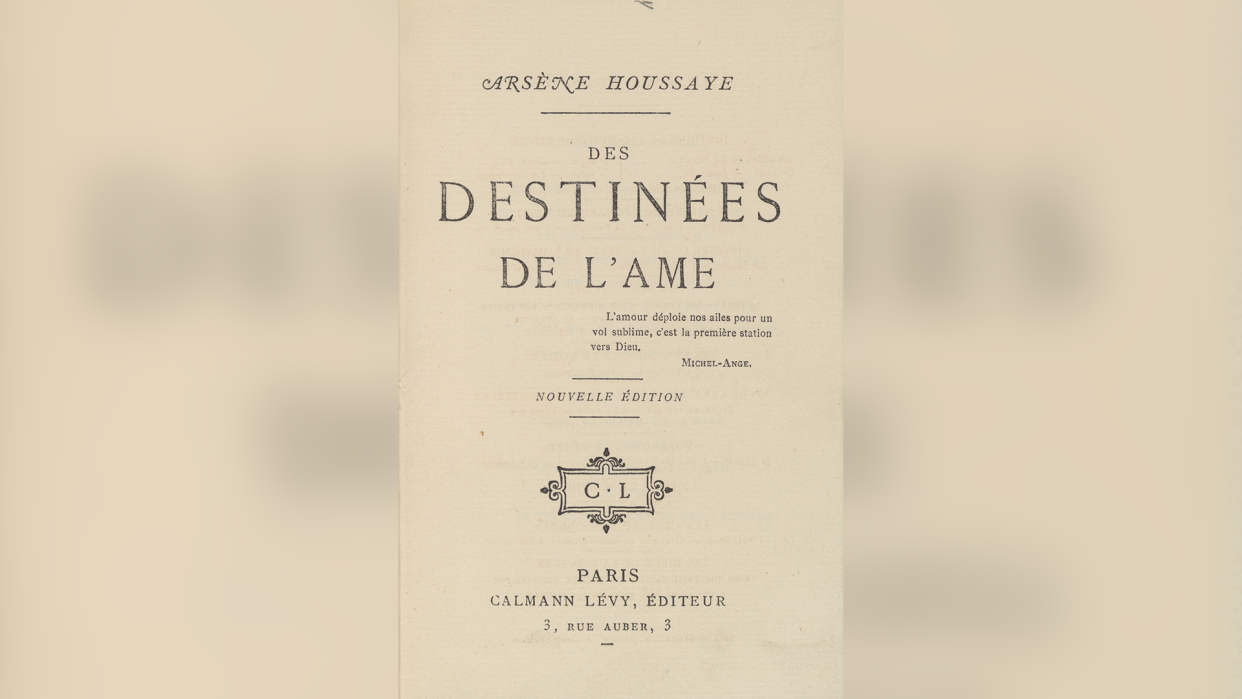Book made with human skin removed from Harvard Library
Harvard Library says it has removed a book that's been in its collection for nearly a century that is partially made with human skin that was taken from a deceased hospital patient without consent. The book's space in the library has long been in question, as it was bound with a woman's skin and included a handwritten note from its first owner saying, "a book about the human soul deserved to have a human covering."
The library announced that it would remove the book, "Des Destinées de L'âme" ("Destinies of the Soul"), earlier this month. The book, published by Arsène Houssaye in 1879, was not originally made of skin. That part was added by the book's first owner, French physician Dr. Ludovic Bouland, who, according to Harvard Library, "bound the book with skin he took without consent from the body of a deceased female patient in a hospital where he worked."

Bouland included a handwritten note in the volume that says, "a book about the human soul deserved to have a human covering," Tom Hyry, associate university librarian for archives and special collections, said in a Harvard Library update.
"Evidence indicates that Bouland bound the book with skin, taken from a woman, which he had acquired as a medical student," Hyry said. "A memo accompanying the book written by John Stetson, which has since been lost, told us that Bouland took this skin from the body of an unknown deceased woman patient from a French psychiatric hospital."
Bouland died in 1933 and the book was added to Harvard's collection in 1934 on deposit. That note also included a description of the process that was used to treat the skin so that it could be bound with the book. The book was formally donated to the university in 1954 and Harvard Library said that it tested the binding in 2014 to confirm that it was bound with human remains.
Until recently, the book had been available to "anyone who asked for it," Harvard Library said, "regardless of their reason for wishing to consult it."
"Library lore suggests that decades ago, students employed to page collections in Houghton's stacks were hazed by being asked to retrieve the book without being told it included human remains," the library states. "Harvard Library acknowledges past failures in its stewardship of the book that further objectified and compromised the dignity of the human being whose remains were used for its binding. We apologize to those adversely affected by these actions."
Anne-Marie Eze, associate librarian of Harvard's Houghton Library, said the book's removal was the culmination of years-long efforts and "as part of the University's larger project of addressing human remains in its collections."
In 2022, the university published a report about human remains found in university collections. A committee found remains of 15 people who "may have been enslaved" in the Peabody Museum, which also holds "one of the nation's largest collections of human remains of Native American individuals." Most of the human remains found across the university collections system are rooted in archaeological context or are used for educational purposes.
The book was not included in that category – and it's not the only piece of human remains believed to be in the library system.
"There is a bone fragment purportedly of Saint Sebastian (ca. 3rd century) in a medallion reliquary," the report states.
The library says that it's now conducting additional research into the book, Bouland and the female patient whose skin was removed, and that the skin itself is in "secure storage at Harvard Library." They are also working with France to "determine a final respectful disposition of these human remains."
Eze said that the book has been "fully digitized" – sans binding – and that those scans have been made publicly available. All images of the skin have been removed from the online catalog and blog posts, and the book itself will only be made available to researchers in the future without its cover.
"The core problem with the volume's creation was a doctor who didn't see a whole person in front of him and carried out an odious act of removing a piece of skin from a deceased patient, almost certainly without consent, and used it in a book binding that has been handled by many for more than a century," Hyry said. "We believe it's time the remains be put to rest."
Eye Opener: Investigators reveal new details about the Baltimore bridge collapse
Mega Millions $1.3 billion winning ticket sold in New Jersey
Baltimore bridge collapse timeline: What happened before, during and after
